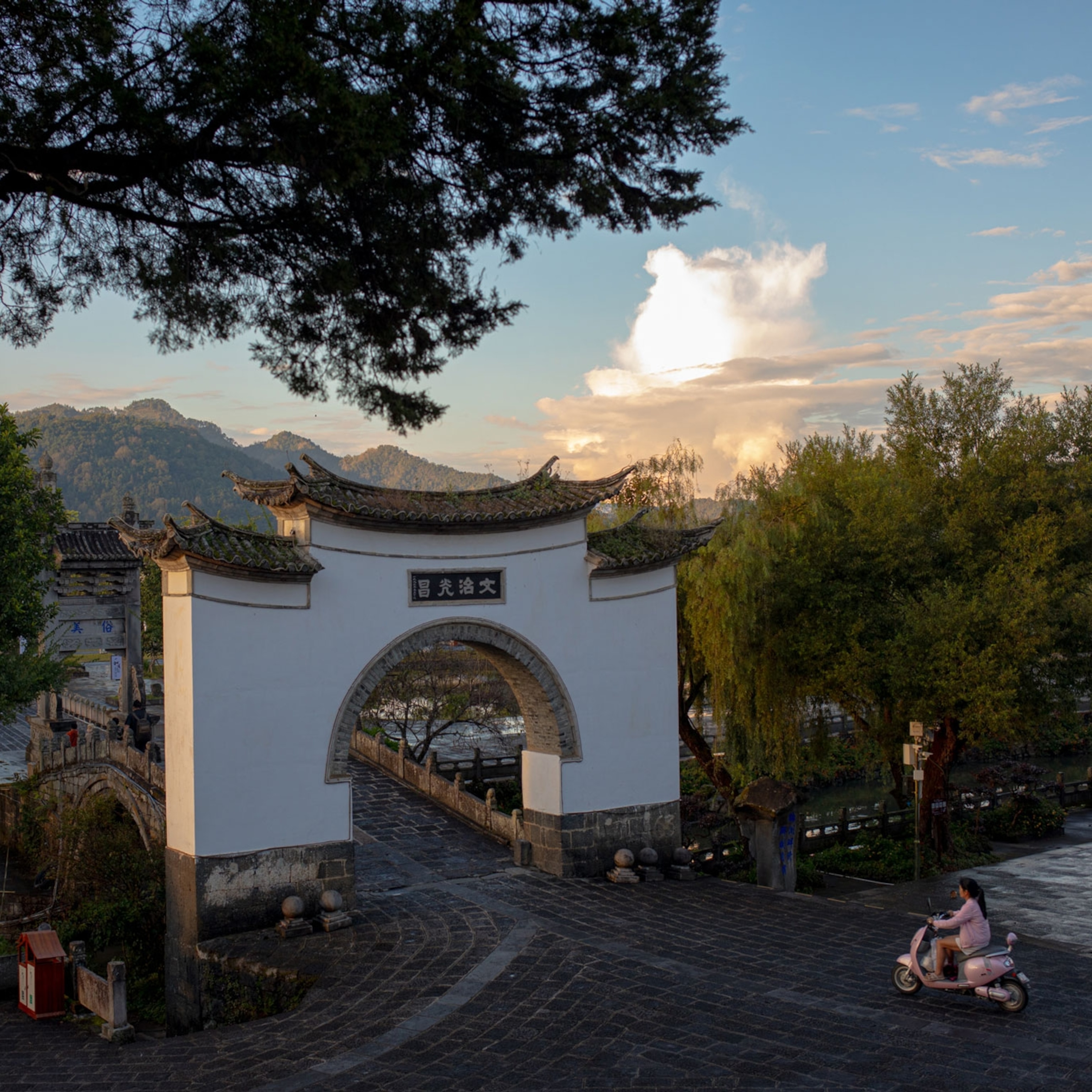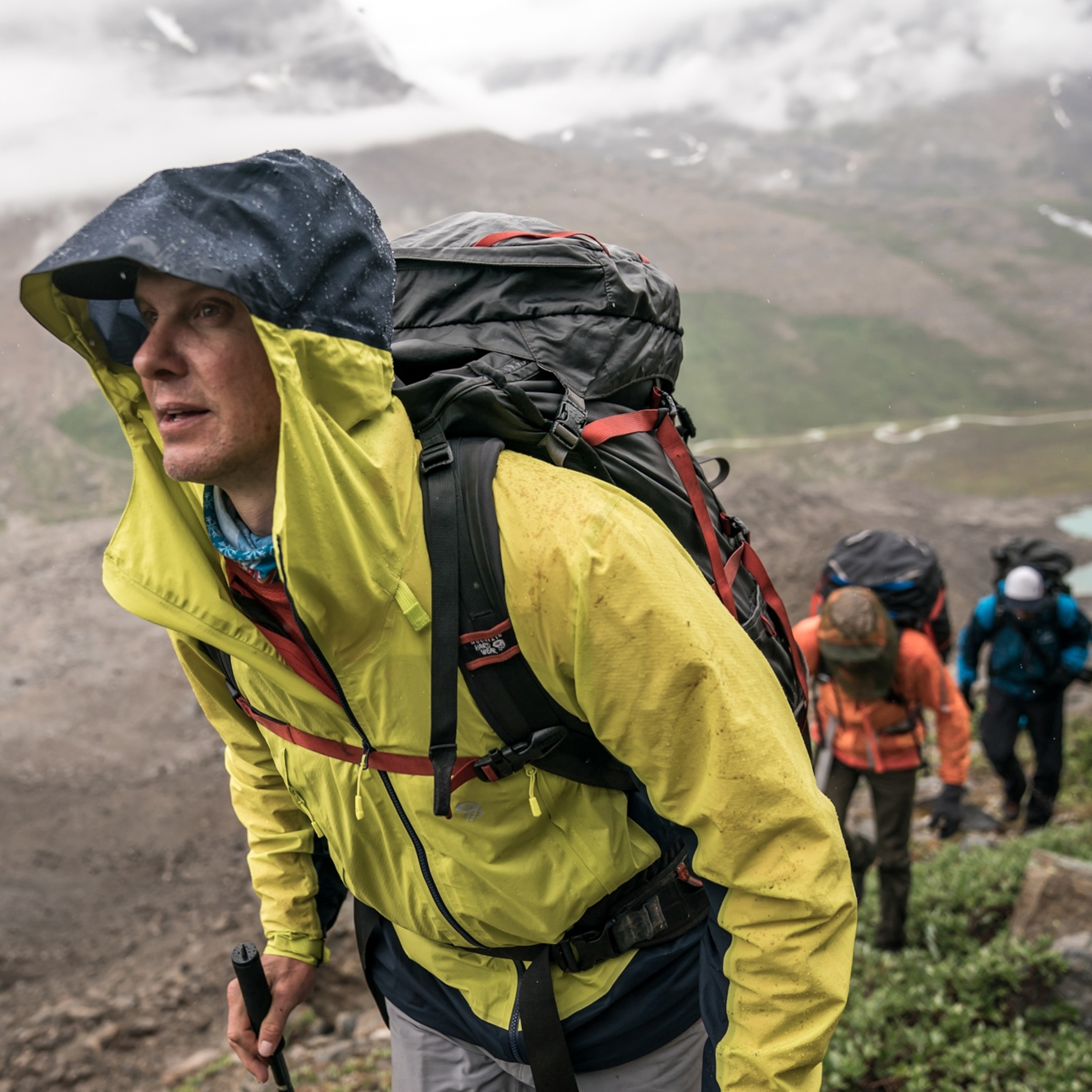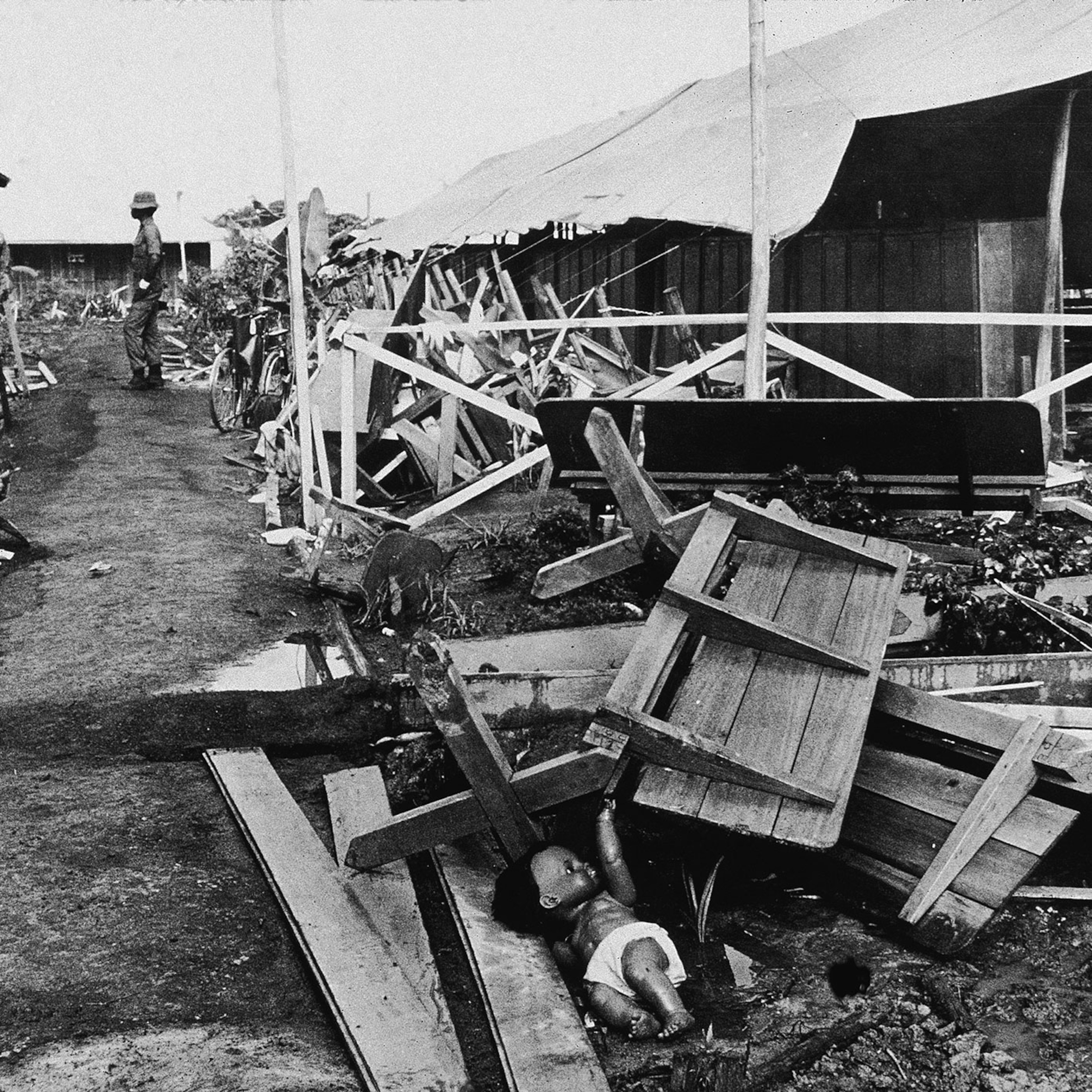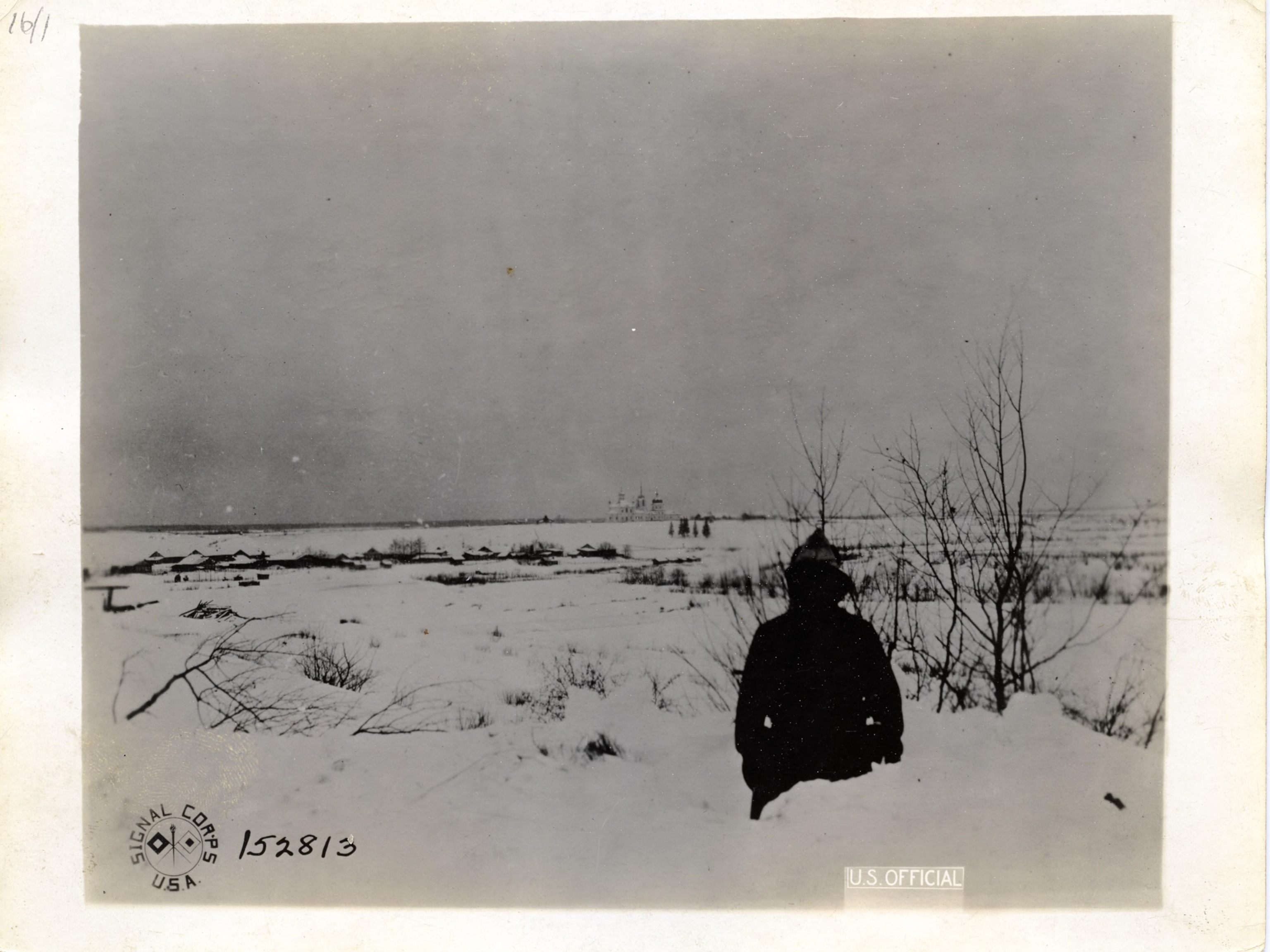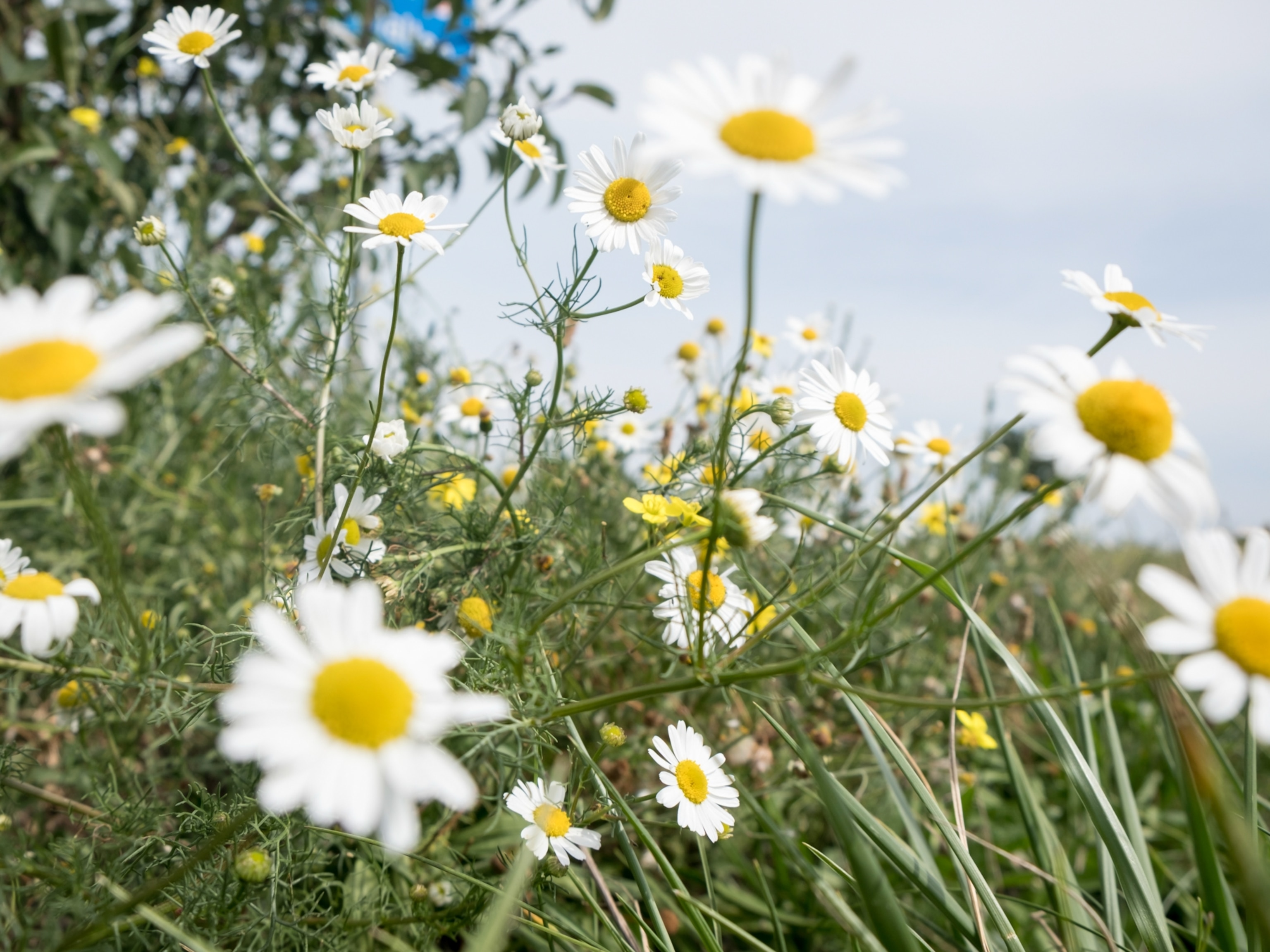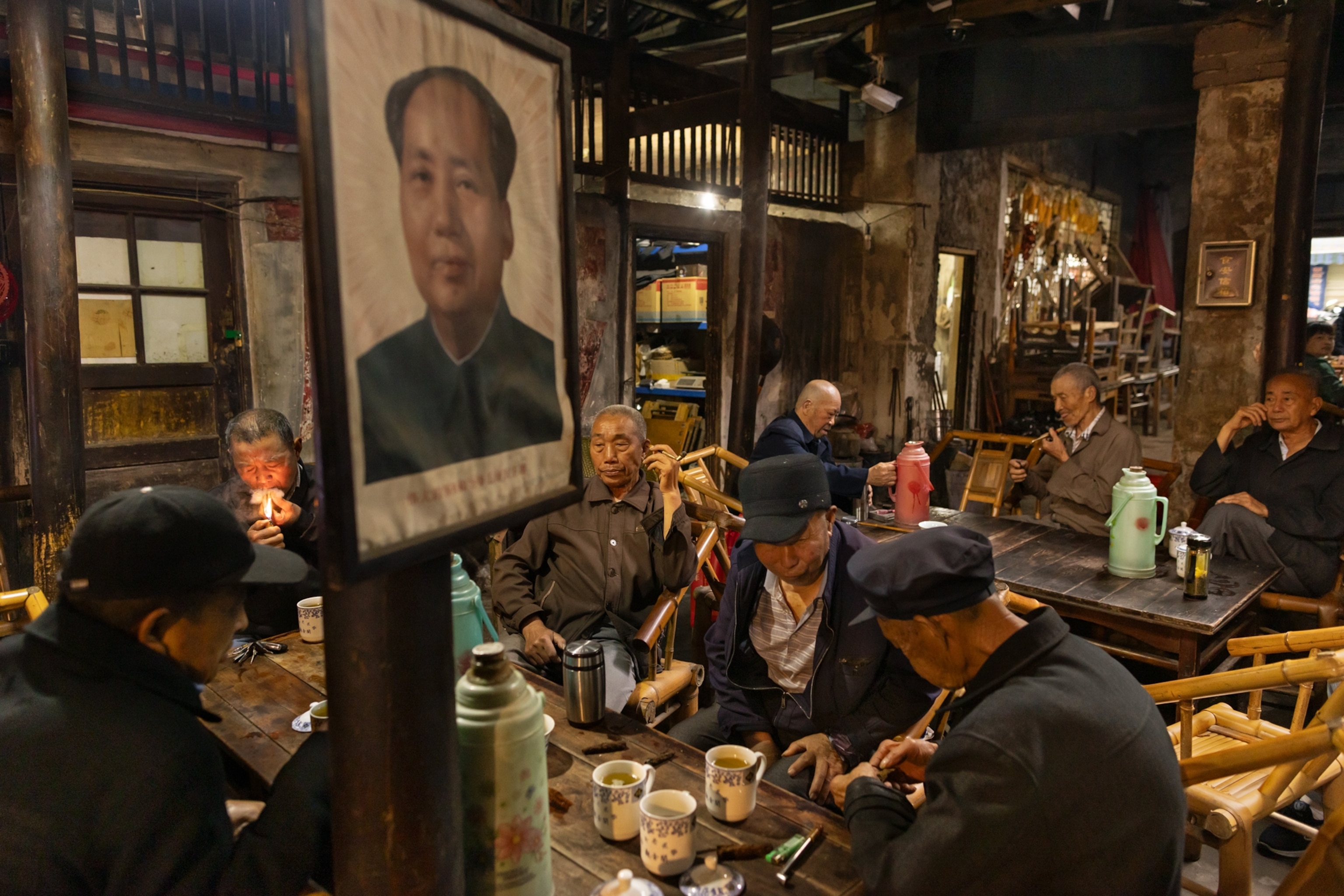
A storyteller retraced Mao Zedong's historic Long March through China—this is what he learned
Paul Salopek spent three years crossing the communist country on foot while witnessing the forces reshaping it. Read the latest adventure in his bold quest to walk the entire world.
For going on three years now, I've been walking across China. When done, I'll have logged some 4,200 miles.
Starting in the southwest in October 2021 and rambling northeast, I’ve roughly followed an imaginary geographical divide called the Hu Line, which separates China’s lusher, densely populated east from its more arid and roomier west. I haven’t spotted too many motorized Chinese out stomping my trails. In a nation of 1.4 billion, this felt odd sometimes, to claim horizons for myself. Which isn’t to say I’m not meeting ghosts.
When you walk the world—and I’ve been trekking from Africa to South America for almost a dozen straight years, following the pathways blazed by our prehistoric ancestors out of Africa—you begin to read terrain like a palimpsest. Some places barely offer up a passing word. Others are layered with the whispers of feet and time. China is like this, a densely narrated landscape.
(Follow Paul Salopek's route with this StoryMap.)
In Yunnan Province I walked the Burma Road, sluiced with the sweat and blood of 200,000 village laborers in World War II. Later, I hunted the cobbled remnants of the thousand-year-old Silk Roads in Sichuan Province. And in Shaanxi Province, my boots raised puffs of dust on the Qin highway, built more than two millennia ago to speed galloping imperial cavalry to the frontiers of Mongolia—a distance of 450 hilly miles—in just three days. Or so legend goes. But the one phantom trail in China that resurfaced often to mind, particularly in the hinterlands, was the Chang Zheng—the Long March.
Every Chinese schoolchild knows the tale: Ninety years ago this October, in 1934, as China lurched through a terrible civil war, the fledgling Communist Party and its peasant Red Army fled their bases in southern China, routed by the Nationalist government of Chiang Kai-shek. To escape total destruction, the Communists walked. They embarked on a 6,000-mile retreat over the eastern Himalaya, across rivers defended by artillery, and through swamps where men and pack animals vanished whole. More than 80,000 troops and camp followers—men, women, children—began this exodus. A year later, only 8,000 still stood. After holing up in the caves of Shaanxi, the survivors rebuilt their revolutionary movement, and by 1949 they’d swept across China, changing the country and the world forever.
“Has history ever known a long march to equal ours? No, never,” crowed Mao Zedong, who, Moses-like, recast his comrades’ retreat as a glorious tale of rebirth. “The Long March has proclaimed to the world that the Red Army is an army of heroes.”
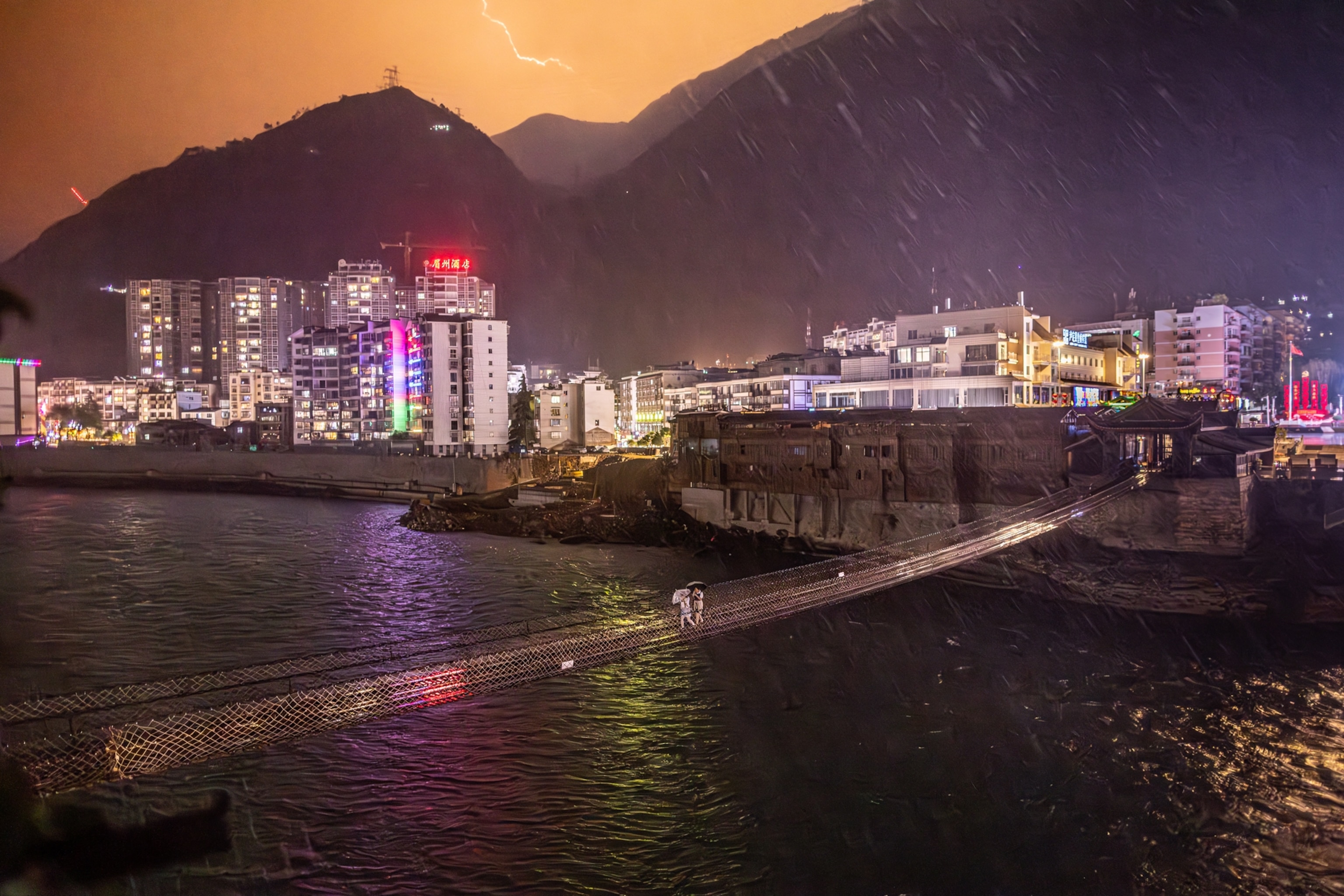
Walking through China today, almost nobody talks of the Long March. It’s a patriotic school lesson: a historical cliché, like Washington crossing the Delaware or Hannibal crossing the Alps. But when I sit on curbs in half-empty Sichuanese villages, guzzling yet another bottle of Nongfu Spring lemonade, or while tottering over the frozen cornfields of Shaanxi, I can almost hear, if I cock my ears, the whisk whisk whisk of thousands of grass sandals shuffling by, footfalls from a spectral column that once stretched 50 miles.
And again I ask myself: Where is China marching now?
(Traveling 'theaters' that once brought joy to rural China fade in the face of tech.)
I leave Yunnan in the first days of 2022 through the ice peaks of the Hengduan range. The lowest passes scrape 14,000 feet and are shin-deep in snow. Below spreads all of Sichuan. I ricochet down rocks to a monastery called Muli, where ethnic Tibetan monks shoot hoops. They wear saffron and American basketball shoes. “PRACTICE BUDDHISM WITH CHINESE CHARACTERISTICS” urges a giant red placard slung across the temple.
Mao and his Long Marchers met fierce resistance in this hypoxic frontier. The Communists hailed from China’s sweltering lowlands. To them, the mountains hard by Tibet were an alien barrier populated by non-Han minorities: a mix of ethnic pastoralists, inhabitants of a so-called tribal corridor. The Red Army’s standard goodwill gesture of redistributing feudal property made little impression among the seminomads.
“Passing into the Mantzu and Tibetan territories, the Reds for the first time faced a populace united in its hostility to them, and their sufferings on this part of the trek exceeded anything of the past,” writes Edgar Snow in Red Star Over China, the seminal book immortalizing the Long March for Western audiences. “They had money but could buy no food. They had guns but their enemies were invisible.” The famished army raided turnip patches. They starved.
Fortunately, I don’t. People are kind. There is always food. One day I skid through a frozen highway tunnel two miles long. Its hermit caretaker, an ethnic Yi handyman named Shen Hao, lives alone in the generator building with a wood-fed stove. “I have everything I need. Things with price tags? You cannot take them with you when you die,” Shen reminds me, filling his dim lodgings with woodsmoke as he prepares us yak butter tea and steaming noodles. “Things without price tags, like love and friendship, maybe those you can take.”

I think about Shen’s words as I stumble, giddy with altitude, into villages of brand-new mansions built of stone. These extraordinary manors, facilitated by easy rural loans, are mostly occupied by wizened couples whose ancestors defied the Red Army. The local roads are impeccable, made of poured concrete. There is decent internet signal. I wonder if such amenities are yet another goodwill effort, this time launched after the 2008 Tibetan uprisings. It seems an old bargain is being struck: prosperity for calm.
On a whim, two spirited teenagers decide to guide me along the road to Jiulong.
One girl is ethnic Yi, the other Tibetan. They don’t speak their minority languages. They don’t need to, they shrug. Classroom instruction is delivered solely in Mandarin. They have marched ahead, leaving their parents marooned in a traditional world.
“Why should we even learn English?” winks one girl. “Soon Chinese will be the language spoken everywhere.”
(In this part of China, hands—not machines—define the rhythm of life.)
In the spring I walk a looping highway. Road workers share their lunch of tangerines. I reach Luding Bridge, the scene of the iconic battle of the Long March. It was fought in 1935. At issue was a strategic, iron-chain span across the Dadu River. As Edgar Snow describes it with zeal: “One by one Red soldiers stepped forward to risk their lives, and, of those who offered themselves, thirty were chosen. Hand grenades and Mausers were strapped to their backs, and soon they were swinging out above the boiling river, moving hand over hand, clinging to the iron chains.”
Today the bridge is a Red tourism site. Elderly Tibetans square-dance next to it, their boom box throbbing out Chinese folk-pop.
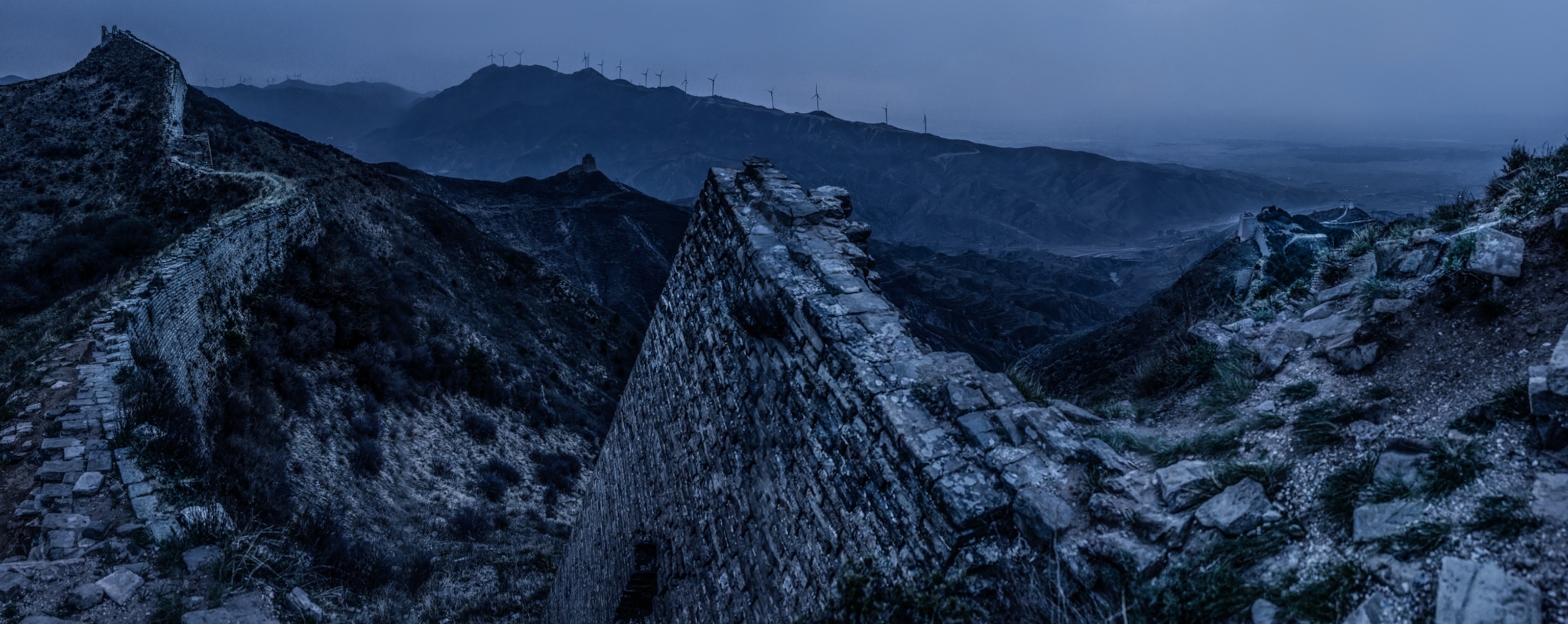
Mao and I temporarily part ways in the river canyon of the Dadu. His ghostly revolutionaries file north, eluding Nationalist armies, to disappear into the wild grasslands and swamps of Gansu. I pivot east, toward big-city Chengdu, the capital of Sichuan. But first, I must scale 11,000-foot Erlang Mountain to meet a man who may be the world’s last living beifu.
Beifu are fabled tea porters. For 250 years, they hauled back-cracking burdens of tea from Sichuan into the Tibetan highlands. (Even children undertook these incredible journeys of woe.) The porters’ grit was legendary. Often traveling barefoot, the beifu traversed 150 miles of snowy crags, lugging bamboo containers of tea weighing up to 400 pounds. Some collapsed of hunger or exposure on frozen mountain trails. Others fell to their death. The corpses were rolled into anonymous graves. Their loads were carried on.
(Walking in the footsteps of China’s historic caravans of tea porters.)
“There used to be many robbers between Kangding and Luding,” Wang Shikang, 89, rasps loudly, in the way of people hard of hearing. “The bandits couldn’t care less about our tea. They always attacked us on the return trip, after we’d been paid. We walked in groups of 20 for protection.” The pay for each Olympian three-week circuit: a handful of coins that would buy a sackful of corn.
“I can still feel the pain,” admits Wang, a stoic, red-faced grandpa who may be the final porter still alive after the foot caravans began to fade 80 years ago. “I have rheumatism in my knees and back.”
I climb Wang’s austere trails of heavy fogs, ice, snow, and strong winds. Pausing to catch my breath, I spot curious holes drilled into flat bedrock. These were worn by the action of hundreds of thousands of wooden guaizi, the indispensable walking sticks of vanished legions of tea porters. Here lay a monument to China’s true superpower, I think: the incomprehensibly vast, unrecorded tenacity of its so-called ordinary people.
(At a remote temple in China, a Kung Fu master keeps the past alive.)
I tramp onward through pages of Edgar Snow, whose 1937 book is both praised as a classic of revolutionary China and condemned as too naive regarding the Communists. A correspondent for the Saturday Evening Post, he traveled secretly to meet Mao in his Shaanxi redoubt, vaccinated “with smallpox, typhoid, cholera, typhus, and plague germs. All five diseases were prevalent in the Northwest.” An outbreak of bubonic plague especially worried him.
Nearly a century later, I wade through the sticky Sichuan summer, zigzagging around COVID-19 lockdown zones.
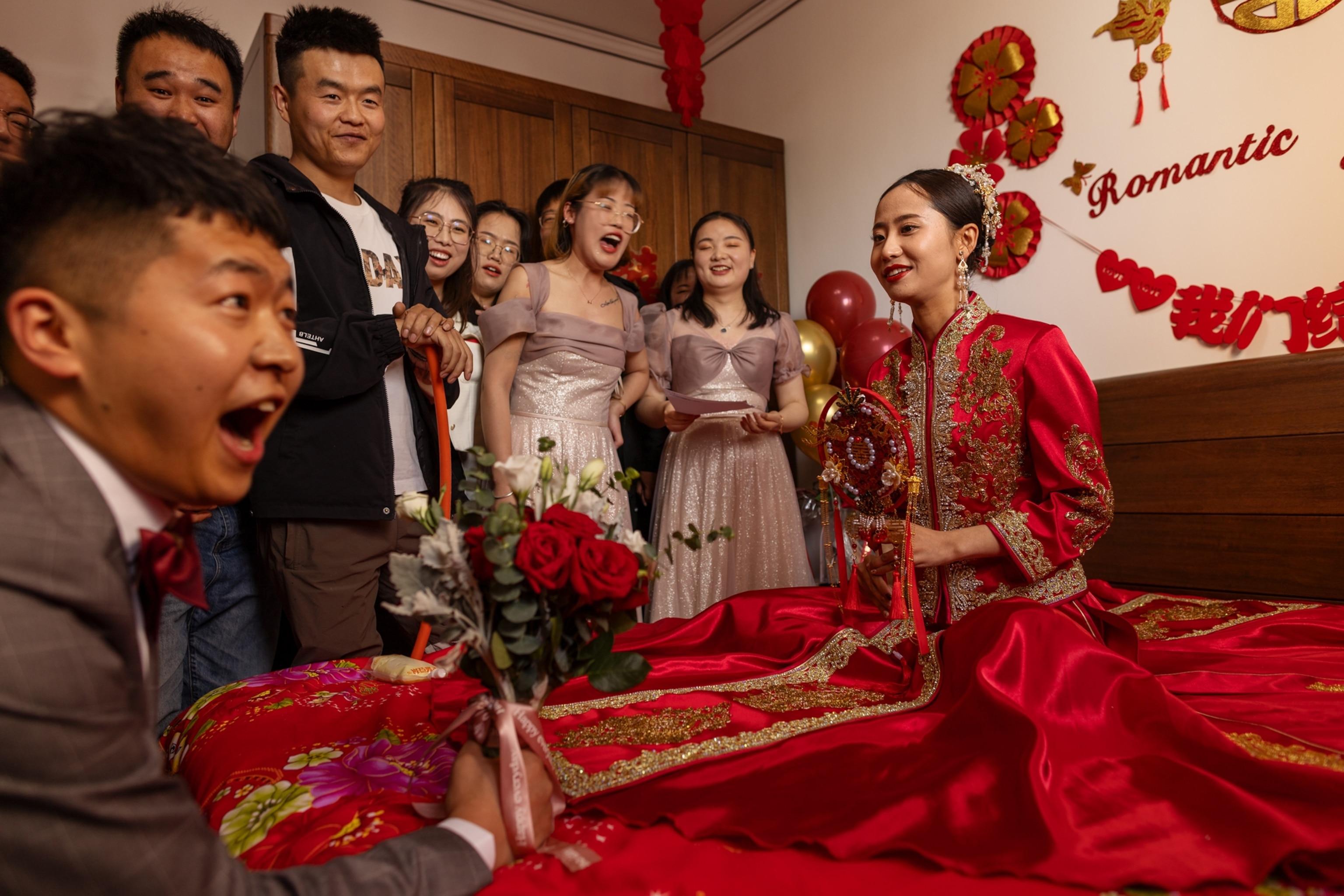
Chengdu is my first megacity. Population 16 million. A garden city. A cultural city. But unpredictable quarantines erupting across its neighborhoods force me to keep going. I must power stride through the colossal metropolis in three days.
Six months later in Xi’an, my next urban center, China’s draconian COVID lockdowns are abruptly canceled. I discover this by startling awake to a silent December dawn. There is no 6 a.m. loudspeaker urging citizens to fall out for PCR tests administered by da bai, the “big whites” in hazmat suits. I blink sleepily out my window: In the courtyard of my cheap hotel, guests with bed head are dancing. Protests against relentless quarantine policies had been erupting across Chinese cities for days. In the age of Mao Zedong as in the era of China’s current leader, Xi Jinping, an addiction to centralizing power still works—until it spectacularly doesn’t.
(These 3,000-year-old relics were torched and buried—but why?)
China manufactures 13 billion pairs of shoes each year. This is enough to shoe 60 percent of humankind. China also assembles 60 percent of the world’s mobile phones, 70 percent of our toys, and nearly 80 percent of our solar panels. Soon it will be selling us most of our electric cars. In addition, more people inhabit caves in China—tens of millions—than anywhere else on Earth. The latter factoid you learn by walking.
Second winter in China. I leave Xi’an and walk into a cosmos of dry gullies and hills. Everywhere, there is a coating of macaron yellow dust: on roads, on my eyelashes, in my bowls of tofu fried in chili sauce. Dust colors the very sunlight that drips from a wax sun. At night, dust settles into my dreams. Blown loess: a steady rain of particulates falling over millions of years from Mongolian steppes. This is the famous Loess, or Yellow Earth, Plateau.
Here, I begin to spot hundreds—thousands—of cave houses called yaodong.
“Warm in the winter, cool in the summer,” Tong Yue, a jolly apple farmer from Baishe village, proclaims, using a sales pitch that must date from the Pleistocene. “Cheap to build too.”
Tong’s shelter is invisible from the surface. I nearly walk past it. Hand-dug 20 feet straight down, it looks like a sunken courtyard, or a drained swimming pool with doors bored into the bottom of each vertical wall. Such structures are the clever brainchildren of poverty and innovation. Many yaodong today sit empty. Their former residents have migrated up and out to cities. Optimistically, Tong has converted her cave into a rural motel. I am her first foreigner.
Her underground rooms are clean, bunkerlike, chilly. A geological silence steeps my whitewashed chamber. At dawn, after a breakfast of Tong’s buckwheat noodles, I shrug on my parka and pack, and step outside. The sky above is square and brightening to the hue of shining steel.
One hundred and sixty miles to the north, hunched at a desk in his own cave house, Mao spent years inventing Marxism-Leninism with Chinese characteristics. A tough American foreign correspondent named Agnes Smedley once visited Mao there, in the ’30s, and punched his wife in an argument.
I read this particular anecdote on my laptop in a Kentucky Fried Chicken while being watched by secret police. All of this occurs in the remote plateau city of Yan’an. It is a redoubt procured by the Red Army after 368 days of walking. After 18 mountain ranges were crossed. After 24 rivers were forded. After fighting 10 warlord armies and the national army of Chiang Kai-shek. The terminus of the Long March.
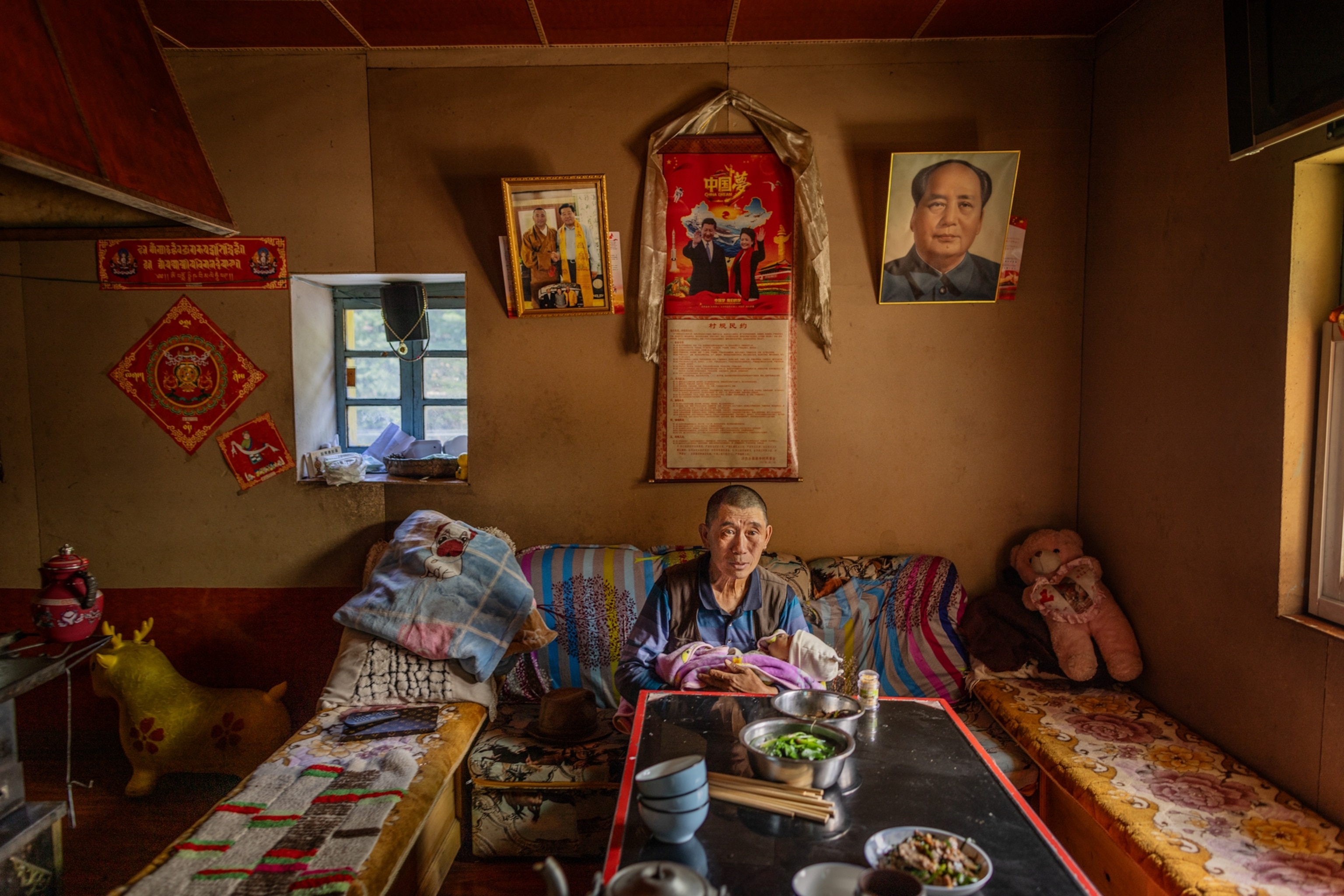
On the trafficless byways in Shanxi Province, I ramble into a village called Tangzhiwa. It is the spring of 2023. Two elderly women sit against a house, deftly hand-stripping poplar branches of young leaves. I ask them if it is edible. “Boil it five times to get the bitterness out,” says Li Qin, explaining the recipe for a famine food eaten today only by the very aged, out of a hard nostalgia.
Li and her friend are among the last people in the village. This is not new. China’s rural spaces have been emptying for generations. Maybe 500 million people have made the shift already. What is new: Rural or urban, they’re all getting older. China is aging. This is the next huge sociological revolution rattling the nation. Many Chinese women today can’t be persuaded to bear even one baby, per the country’s extinct “one child” policy. The rapid graying of China soon will trigger colossal economic impacts globally. Over the next decade, a staggering 300 million people will age out of the Chinese workforce: nearly the population of the United States. Who then will staff the “factory of the world”?
(China’s population is shrinking. It faces a perilous future.)
I walk across the green scrub hills of Hebei Province. I am nearing Beijing. Fourteen years after the Long March, Mao occupied the city and declared the birth of the People’s Republic of China from Tiananmen Square. He’s still there, sealed inside a crystal sarcophagus. You can visit him starting at 8 a.m. daily except on Mondays.
“A genius,” a young artist from Yunnan once told me of Mao. “He knew how to inspire men’s hearts.”
“He killed my grandfather,” muttered a middle-age farmer in Sichuan. It wasn’t the right moment to ask whether he meant in battle or likelier through policies that swept away multitudes. (The Great Leap Forward, Mao’s misbegotten stab at industrialization, ended up starving some 30 million Chinese.) Officially, the Chairman’s reputation appears to be ascendant. President Xi has revived the cult of personality, seeking to emulate the Great Helmsman’s grip on power.
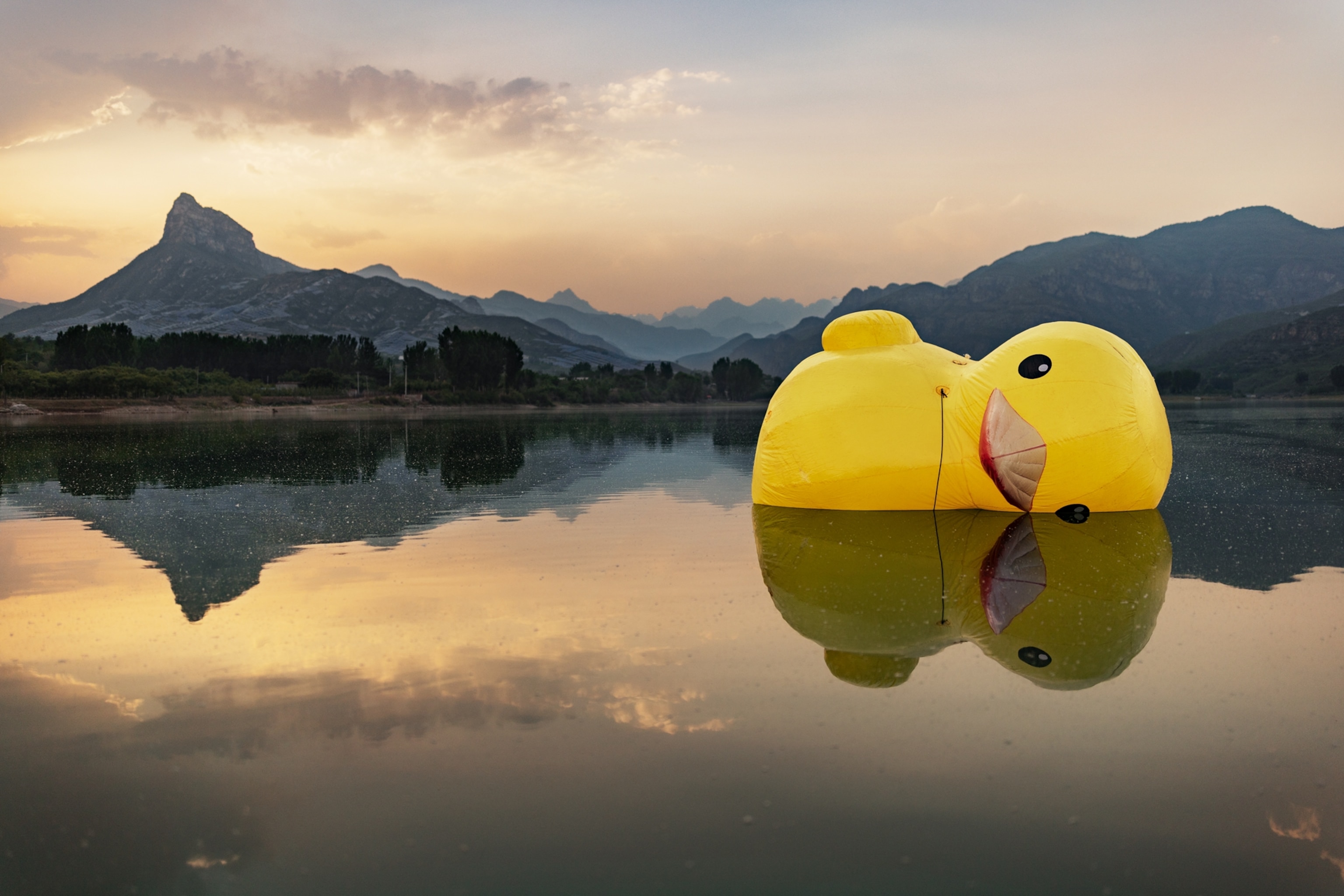
Twenty-five miles west of Beijing I visit Tianyuan Cave. The shallow cave is among the oldest Homo sapiens sites in Asia. The ancient man whose bones were found there died 40,000 years ago. This makes him among the earliest anatomically modern humans to tread what is today China. Scientists, studying his toe bones, even hypothesize he may have worn shoes—if true, another first in our long prehistory of settling of the globe.
What did Tianyuan Man dream of? What was his main complaint? That he was not loved enough? That his life’s path seemed a maddening circle? That he was driven cruelly on by his heart or belly? I stand squinting at the cave’s mouth, looking down over the hills toward the unseen metropolis. Cicadas trumpet the broiling June day. The hills are fuzzed with apricot and oak. We have come so far. And we have so long yet to march. And my heart turns over. And I can feel it already, as I begin my descent to the old capital that Marco Polo called Cambaluc. I will miss China.
(Walking the Earth for 9 years plays tricks on your mind.)
This story appears in the September 2024 issue of National Geographic magazine.
Paul Salopek, an Explorer since 2012 and two-time Pulitzer Prize-winning writer, set out in 2013 on a slow storytelling journey, tracing our ancestors’ migration from Africa to South America. To date, the footsore journalist has covered more than 15,000 miles.
John Stanmeyer's 21st feature for the magazine took him back to China, where he lived from 1996 to 2003. An Explorer since 2017, he now resides in Massachusetts with two Great Danes. His next photography project will focus on soil extinction.
You May Also Like
Go Further
Animals
- What would the world look like without mosquitoes?What would the world look like without mosquitoes?
- Social media loves to villainize dolphins. Here's why it's wrong.Social media loves to villainize dolphins. Here's why it's wrong.
- How did wolves evolve into dogs? New fossils provide cluesHow did wolves evolve into dogs? New fossils provide clues
- This unorthodox method is saving baby parrots from extinctionThis unorthodox method is saving baby parrots from extinction
- A deadly disease that affects cats big and small found in U.S.A deadly disease that affects cats big and small found in U.S.
Environment
- ‘Corn sweat’—and other weird weather phenomena—explained‘Corn sweat’—and other weird weather phenomena—explained
- A sea tornado sank a yacht. We might see them more often.A sea tornado sank a yacht. We might see them more often.
- How billions of dollars are revolutionizing ocean explorationHow billions of dollars are revolutionizing ocean exploration
- Where to go stargazing in Chile according to a local astronomer
- Paid Content
Where to go stargazing in Chile according to a local astronomer
History & Culture
- Did Babe Ruth really ‘call’ this legendary home run?Did Babe Ruth really ‘call’ this legendary home run?
- The real history behind the legend of China's Monkey KingThe real history behind the legend of China's Monkey King
- How new technology transformed the American workforceHow new technology transformed the American workforce
- This secret Civil War sabotage mission was doomed from the startThis secret Civil War sabotage mission was doomed from the start
- This rare burial site reveals secrets about the Sahara's lush pastThis rare burial site reveals secrets about the Sahara's lush past
Science
- Why some say tennis is 'the world's healthiest sport'Why some say tennis is 'the world's healthiest sport'
- Your body ages rapidly at 44 and 60. Here's how to prepare.Your body ages rapidly at 44 and 60. Here's how to prepare.
- How do gold nuggets form? Earthquakes may be the keyHow do gold nuggets form? Earthquakes may be the key
- Astronauts getting stuck in space is more common than you thinkAstronauts getting stuck in space is more common than you think
Travel
- These are the must-see sights of Italy's Veneto regionThese are the must-see sights of Italy's Veneto region
- A guide to St John's, Atlantic Canada's iceberg capitalA guide to St John's, Atlantic Canada's iceberg capital
